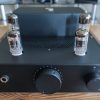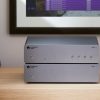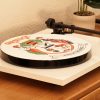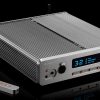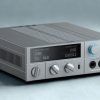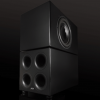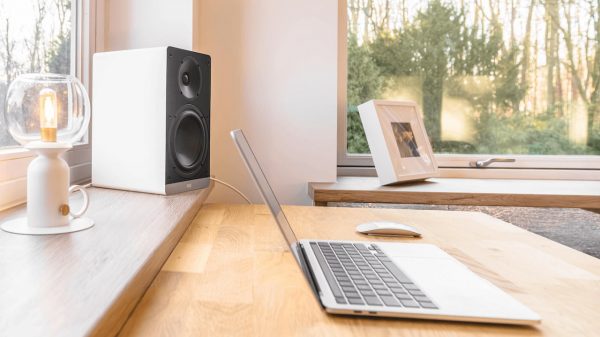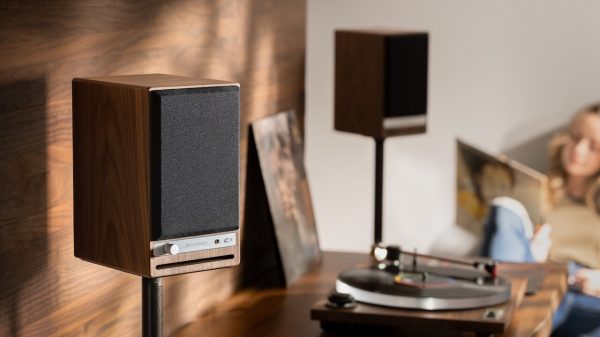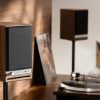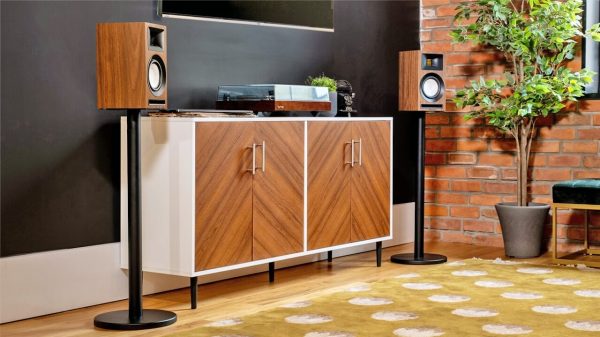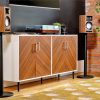Have you ever wondered why loudspeaker manufacturers utilize passive radiators in their designs?
In some cases, one or more ports or passive radiators are used in addition to speaker drivers. In this article, we take a look at passive radiators.
What a Passive Radiator Is
A passive radiator looks like a driver because it has a diaphragm, but unlike a “real” driver, it doesn’t have a voice coil or driving mechanism. This also means that it doesn’t have connection terminals for an audio signal to be fed directly to it from an amplifier.
Instead of the more sophisticated construction of a traditional speaker, a passive radiator most often just includes a frame, cone (or another type of diaphragm), the surround, spider, and maybe a post or weight on the back for added heft.

Tip: Passive radiators may be coned-shaped similar to a traditional speaker, or may also be oval or rectangular-shaped at the speaker maker’s discretion.
How a Passive Radiator Reproduces Sound
With no driver assembly or ability to connect directly to an audio signal source, you are probably asking “How does a passive radiator reproduce sound?“
When placed inside a speaker enclosure in combination with traditional drivers, the passive radiator produces sound by its cone/diaphragm vibrating in response to the air pressure created by the main speaker within the enclosure.
If the enclosure interior and passive radiator are well designed the triggered vibrations of the passive radiator will complement and add to the sound frequencies produced by the speaker with the result of pushing more air out from the loudspeaker enclosure.
The inclusion of a passive radiator provides a way for a loudspeaker assembly to provide more sound, especially in lower frequencies without requiring more amplifier power.
Where are Passive Radiators Used?
You might find passive radiators used with the following types of speakers.
Subwoofers: The purpose of a subwoofer is to provide room-filling deep bass. By using one or two passive radiators in combination with the main subwoofer driver, more air can be pushed out at the desired low frequencies while keeping the subwoofer enclosure smaller.

Floor Standing or Bookshelf Speakers: In a similar way to using passive radiators in a subwoofer, using one or two passive radiators in a floor standing or bookshelf speaker can complement the already included mid/woofer or woofer in the low-frequency range, providing a fuller sound without requiring more power or increasing the size of the enclosure.

Compact Wireless, Portable, or Smart Speakers: Since portable and smart speakers are so small in comparison to floor standing and bookshelf speakers, the built-in drivers are also quite small and can’t push out the amount of air that may be desired for a satisfying full-range listening experience. By including a compact-size passive radiator in addition to the main driver, the lower frequencies can be better emphasized without the full extra weight of an additional driver or the weight of a more powerful amplifier to deliver better results.

Optimizing Passive Radiators
While the concept of passive radiators is easy to understand, you don’t stick one into the speaker enclosure randomly and expect to get the desired results.
When speaker designers make the choice to incorporate one or more passive radiators into a loudspeaker or subwoofer, the following needs to be taken into consideration:
- Exterior Speaker Enclosure Design: The exterior part of the enclosure, such as the baffle type used, has to support the radiating of sound into the room cleanly without interference.
- Interior Speaker Enclosure Design: The interior of the enclosure needs to support the movement of air from the main speaker(s) so that it makes the passive radiator vibrate at the desired frequencies.
- The Choice of Main Driver(s): The main driver(s) need to reproduce the audio input signal at the desired frequencies and that it/they move the right amount of air to take advantage of the passive radiator’s capabilities.
- The Choice of Passive Radiator: The passive radiator needs to complement the main speaker(s) and the enclosure so that they all work in unison to provide the desired listening experience.
Tuning: In addition to assembling all of the necessary components, the speaker designer then has to tune the passive radiator to the main speaker(s) to avoid unwanted distortion and make sure that that passive radiator is optimized to reproduce the desired frequencies with enough audibility. In addition, if the tuning process is performed successfully, the passive radiator absorbs energy from the main speaker(s), which reduces their motion (dampening). A by-product of this process is that damage (aka blowout) to the main speaker(s) is reduced at high volume levels.
Tip: Although there are sonic and physical design benefits to consider in the use of passive radiators another practical reason for their use is that they are less expensive than adding larger or more traditional speaker drivers to a loudspeaker configuration.
Examples of Speakers with Passive Radiators
- Monoprice Monolith MTM-100 Powered Speakers
- Lyngdorf Audio High-End Cue-100 Loudspeaker
- Buchardt Audio P300 Bookshelf Loudspeaker
- Octavio Maestro Wireless Speakers
- Monster DNA One and Max Portable Bluetooth Speakers
- Monster Blaster 3.0 Bluetooth Speaker
- Razer Leviathan V2 Soundbar
- Philips Fidelio Series Soundbar with Wireless Sub
- Definitive Technology Dymension DM60, DM70, DM80 Powered Speakers
Tip: Another method of adding to loudspeaker sound output is to use a port rather than a passive radiator, which we will cover separately.
Related Reading


